HOME
THE SUN OF GOD
Within the Sun Book or Holy Bible was incorporated by such priestcraft the most consolidated version of the celestial mythos ever assembled, the story of the "son of the sun of God."
First, we have seen that "God" is the sun.
Second, in Job 38 the stars are called "sons of God"; hence, one star would be a "son of God," as well as the "son of the Sun."
Thus, the son of God is the sun of God.
The solar mythos, in fact, explains why the narratives of the sons of God previously examined are so similar, with a godman who is crucified and resurrected, who does miracles and has 12 disciples, etc.: To wit, these stories were in actuality based on the movements of the sun through the heavens.
In other words, Jesus Christ and the others upon whom he is predicated are personifications of the sun, and the gospel fable is merely a repeat of a mythological formula revolving around the movements of the sun through the heavens.
What we find as our quest is the ability to understand such mythos as applied to a Jewish Rabbi who preached repentance and Kingdom of God and factor these out as they simply fables of primitive mankind who lacked enough knowledge about science to not have to fall prey to such superstitions to explain the world around him.
For example, many of the world's crucified godmen have their traditional birthdays on December 25th ("Christmas"). This date is set because the ancients recognized that (from a geocentric perspective in the northern hemisphere) the sun makes an annual descent southward until after midnight of December 21st, the winter solstice, when it stops moving southerly for three days and then starts to move northward again.
During this time, the ancients declared that "God's sun" had "died" for three days and was "born again" after midnight of December 24th.
Thus, these many different cultures celebrated with great joy the "sun of God's" birthday on December 25th.
THE FOLLOWING ARE THE MAIN CHARACTERISTICS OF THE "SUN OF G-D":
The sun "dies" for three days at the winter solstice, to be born again or resurrected on December 25th.
The sun of God is "born of a virgin," which refers to both the new or "virgin" moon and the constellation of Virgo.
The sun's "birth" is attended by the "bright Star," either Sirius/Sothis or the planet Venus, and by the "Three Kings," representing the three stars in the belt of Orion.
The sun at its zenith, or 12 noon, is in the house or heavenly temple of the "Most High"; thus, "he" begins "his Father's work" at "age" (Lloyd Graham, Deceptions And Myths Of The Bible, Citadel, 1991, p. 74). Maxwell relates, "At that point, all Egypt offered prayers to the ?Most High' God!" (Tim Leedom, The Book Your Church Doesn't Want You To Read, Kendal/Hunt, 1993, p. 23).
The sun enters into each sign of the zodiac at 30 degrees; hence, the "Sun of God" begins his ministry at "age" 30. As Hazelrigg states, " the Sun of the visible heavens has moved northward 30" degrees and stands at the gate of Aquarius, the Water-bearer, or John the Baptist of the mystic planisphere, and here begins the work of ministry in the Palestine" (John Hazelrigg, The Sun Book, Health Research, 1971, p. 163).
The sun is the "Carpenter" who builds his daily "houses" or 12 two-hour divisions.
The sun's "followers" or "disciples" are the 12 signs of the zodiac, through which the sun must pass.
The sun is "anointed" when its rays dip into the sea (Karl Andeson, Astrology Of The Old Testament, Health Research, 1970, p. 206).
The sun "changes water into wine" by creating rain, ripening the grape on the vine and fermenting the grape juice.
The sun "walks on water," referring to its reflection (Gearld Massey, The Historical Jesus And The Mythical Christ, Health Research, p. 27).
The sun "calms the sea" as he rests in the "boat of heaven" (Mt. 8:23-7) (Tim Leedom, The Book Your Church Doesn't Want You To Read, Kendal/Hunt, 1993, p. 23).
When the sun is annually and monthly re-born, he brings life to the "solar mummy," his previous self, raising it from the dead.
The sun triumphantly "rides an ass and her foal" into the "City of Peace" when it enters the sign of Cancer, which contains two stars called "little asses," and reaches its fullness (Albert Pike, The Morals And Dogma Of Scottish Rite Freemasonry, L.H. Jenkins, 1928, p. 465).
The sun is the "Lion" when in Leo, the hottest time of the year, called the "throne of the Lord."
The sun is "betrayed" by the constellation of the Scorpion, the backbiter, the time of the year when the solar hero loses his strength.
The sun is "crucified" between the two thieves of Sagittarius and Capricorn.
The sun is hung on a cross, which represents its passing through the equinoxes, the vernal equinox being Easter.
The sun darkens when it "dies": "The solar god as the sun of evening or of autumn was the suffering, dying sun, or the dead sun buried in the nether world."(Gerald Massey, The Egyptian Book Of The Dead, Health Research, p. 50).
The sun does a "stutter-step" at the winter solstice, unsure whether to return to life or "resurrect," doubted by his "twin" Thomas.
The sun is with us "always, to the close of the age" (Mt. 28:20), referring to the ages of the precession of the equinoxes.
The sun is the "Light of the World," and "comes on clouds, and every eye shall see him."
The sun rising in the morning is the "Savior of mankind."
The sun wears a corona, "crown of thorns" or halo.
The sun was called the "Son of the Sky (God)," "All-Seeing," the "Comforter," "Healer," "Savior," "Creator," "Preserver," "Ruler of the World," and "Giver of Daily Life."(T.W. Doane, Bible Myths And Their Parallels In Other Religions, Health Research, 1985, p. 472, 478, 492, 562).
The sun is the Word or Logos of God.
The all-seeing sun, or "eye of God," was considered the judge of the living and dead who returned to Earth "on a white horse." (T.W. Doane, Bible Myths And Their Parallels In Other Religions, Health Research, 1985, p. 477-498).
THE IMPORTANCE OF EGYPT
A. Churchward demonstrates the complex yet poetic celestial mythology of the Egyptians, developed around the core mythos long prior to the Christian era:
The Sun was not considered human in its nature when the Solar force at dawn was imaged by the Lion-faced Atum, the flame of the furnace by the fiery serpent Uati, the Soul of its life by the Hawk, the Ram, or the Crocodile.
Until Har-ur the elder Horus was depicted as the child in the place of the calf or lamb, fish, or shoot of papyrus plant, which now occurred in the Solar Cult, no human figure was personalized in the Mythology of Egypt.
Isis in this Cult takes the place of Hathor as the Mother-Moon, the reproducer of light in the underworld. The place of conjunction and of rebegettal by the Sun-god was in the underworld, when she became the woman clothed with the sun.
At the end of lunation the old Moon died and became a corpse; it is at times portrayed as a mummy in the underworld and there it was revivified by the Sun-god, the Solar fecundation of the Moon representing the Mother, resulting in her bringing forth the child of light the "cripple deity," who was begotten in the dark (Albert Churchward, The Origin And Evolution Of Religion, George Allen & Unwin Ltd., London, 1924, p. 226).
Massey provides another sketch of the mythos as applied to Horus, who, like Baal, was the sun in the Age of Taurus:
[The] infant Horns, who sank down into Hades as the suffering sun to die in the winter solstice and be transformed to rise again and return in all his glory and power in the equinox at Easter> (Gerald Massey, The Egyptian Book Of The Dead, Health Research, p. 9)
As we have seen, the story of Jesus as depicted in the New Testament is virtually identical in numerous important aspects to that of Horus, a solar myth. Higgins spells it out:
The history of the sun is the history of Jesus Christ.
The sun is born on the 25th of December, the birthday of Jesus Christ. The first and greatest of the labours of Jesus Christ is his victory over the serpent, the evil principle, or the devil. In his first labor Hercules strangled the serpent, as did Cristna, Bacchus, etc.
This is the sun triumphing over the powers of hell and darkness; and, as he increases, he prevails, till he is crucified in the heavens, or is decussated in the form of a cross (according to Justin Martyr) when he passes the equator at the vernal equinox. (Godfrey Higgins, Anacalypsis Vol II, A & B Books, 1992, p. 144).
At Malachi 4:2, YHWH says, "But for you who fear my name the sun of righteousness shall rise, with healing on its wings."
Answer for yourself: Who is this sun of righteousness with healing on its wings?
Malachi is the last book of the Old Testament, and this scripture is one of the last in that book, which leads directly into the story of Jesus, who was indeed called by the Church fathers the "sun of righteousness."
Malachi's sun of righteousness rising with "healing on its wings" is, in reality, the saving light that ends the gloom of night, the daily resurrection of sunrise, and the birth of the sun of a new age, who was carnalized and historicized in Jesus Christ.
As "shamash," which is the Hebrew word for sun and the name of the Babylonian sun god, Malachi's righteous sun is also Solomon's Moabite god Chemosh, which is the same as shamash in Hebrew, an ironic development considering Chemosh was later demonized by the Christians.
Jesus's solar attributes are also laid plain by the story of his followers waiting to go to his "tomb" until sunrise, when "he is risen." In John 2, Jesus says, "Destroy this temple, and in three days (three days of darkness at the Winter Soltice remember?)
I will raise it up"; however, as John relates," he spoke of the temple of his body," an admission of biblical allegory. In this statement Jesus describes his own solar resurrection, not that of the Jerusalem Temple, although the original "Temple of the Most High" is indeed the same Temple of the Sun that is Jesus's "body."
In fact, Jesus is called the "son of the Most High God" (Lk. 8:28; Mk. 5:7) and a priest after the order of Meichizedek, who was the priest of the Most High, El Elyon, or Helios, the sun.
Now set down all your Paul enthusiasts for what is said next. At Acts 26:13, regarding his conversion Paul says, "At midday, 0 king, I saw on the way a light from heaven, brighter than the sun, shining round me and those who journeyed with me," the light, of course, being Jesus. The words "at midday" represent the sun at its zenith, when it is doing its work in the Temple of the Most High, brighter than at any other time.
As expected, the early Christians were considered sun-worshippers, like their "Pagan" counterparts, although "sun worship" is an inaccuracy, since the ancients did not "worship" the sun as the "one god" but revered it as one of the most potent symbols of the quality of divinity.
For example, Krishna was considered not just the sun itself but the light in the sun and moon (T.W. Doane, Bible Myths And Their Parallels In Other Religions, Health Research, 1985, p. 284) making him, like Jesus, brighter than the sun. Like their predecessor temples, many early Christian churches faced the east, or the place of the rising sun like so many of the solar temples of the ancients.
In fact, as Doane relates, "Tertullian says that Christians were taken for worshipers of the Sun because they prayed towards the East, after the manner of those who adored the Sun" (T.W. Doane, Bible Myths And Their Parallels In Other Religions, Health Research, 1985, p. 500-502). Ex-Pagan and Bishop of Carthage Tertullian's actual words from his Apology are as follows:
Others, again, certainly with more information and greater verisimilitude, believe that the sun is our god. We shall be counted Persians perhaps, though we do not worship the orb of day painted on a piece of linen cloth, having himself everywhere in his own disk. The idea no doubt has originated from our being known to turn to the east in prayer.
But you, many of you, also under pretence sometimes of worshipping the heavenly bodies, move your lips in the direction of the sunrise. In the same way, if we devote Sun-day to rejoicing, from a far different reason than Sun-worship, we have some resemblance to those of you who devote the day of Saturn to ease and luxury, though they too go far away from Jewish ways, of which indeed they are ignorant.
In his protestations and refutations of critics, Tertullian further ironically admits the true origins of the Christ story and of all other such godmen by stating, "You say we worship the sun; so do you."
(Joseph Wheless, Forgery In Christianity, Health Research, 1990, p. 147). Interestingly, a previously strident believer and defender of the faith, Tertullian later renounced Christianity (Joseph Wheless, Forgery In Christianity, Health Research, 1990, p. 144).
Christ was frequently identified as and/or with the sun by other early orthodox Christian fathers, including St. Cyprian (d. 258), who "spoke of Christ as the true sun (sol verus)," and St. Ambrose (@339-397), Bishop of Milan, who said of Christ, "He is our new sun." (www.christianism.com). Other Church fathers who identified Christ with, if not as, the sun include St. Gregory of Nazianzus (c. 330-c. 389), and St. Zeno of Verona (d. c. 375), who "calls Christ 'Sol noster, sol verus.'"
Moreover, this overt Christian sun-worship was not a short-lived aberration, as Christian proponents would portray it. Wheless relates that "Leo the Great in his day (440-461) says that it was the custom of many Christians to stand on the steps of the Church of St. Peter and pay homage to the Sun by obeisance and prayers" (Joseph Wheless, Forgery In Christianity, Health Research, 1990, p. 30).
As to such "insider" knowledge of the true meaning of Christianity, Doane remarks:
Many Christian writers have seen that the history of their Lord and Saviour is simply the history of the Sun, but they either say nothing, or, like Dr. Parkhurst and the Rev. J. P. Lundy, claim that the Sun is a type of the true Sun of Righteousness.
This "type of" sophistry has been used frequently in "religious" debate to squeeze out of a tight corner. Yet, the Christian conspirators cannot hide the fact that their "Lord's Day" is indeed Sun-day; hence, their Lord is the sun.
Even though this information has been well hidden, the early Christians were aware that Christ was the sun, as they were truly Gnostic and the solar myth was known all around them.
When a member of at least one such Gnostic sect wished to become orthodox, he was compelled to renounce his "heresy" of equating Christ with the sun. Higgins relates of the influential and widespread Gnostic group called the Manichaeans:
When a Manichaean came over to the orthodox he was required to curse his former friends in the following terms: "I curse Zarades [Zarathustra/Zoroaster] who, Manes said, had appeared as a God before his time among the Indians and Persians, and whom he calls the sun.
I curse those who say Christ is the sun, and who make prayers to the sun, and to the moon, and to the stars, and pay attention to them as if they were really Gods, and who give them titles of most lucid Gods, and who do not pray to the true God, only towards the East, but who turn themselves round, following the motions of the sun with their innumerable supplications.
I curse those persons who say that Zarades and Budas [Buddha] and Christ and Manichaeus and the sun are all one and the same." (Godfrey Higgins, Anacalypsis Vol I, A & B Books, 1992, p. 722).
In his 2nd Apology, Justin Martyr acknowledges that the Gnostic-Christian Manichaeans were "sun-worshippers" and says:
Accordingly, Menander seems to me to have fallen into error when he said: "0 sun! for thou, first of gods, ought to be worshipped, by whom it is that we are able to see the other gods." For the sun never could show me the true God; but that healthful Word, that is the Sun of the soul, by whom alone, when He arises in the depths of the soul, the eye of the soul itself is irradiated.
In order to obscure the origins of Christianity, Justin is attempting to distinguish between the sun of the Gnostics, which was the solar orb, and the "sun (sol) of the soul" in the "person" of Jesus Christ.
In fact, the sun of the Gnostics and other "sunworshippers" also represented the cosmic and cellular "sun" found in living things, including human beings, who, it was perceived, by Gnosticism can become illuminated.
Thus, both Gnostic and orthodox Christians were addressing the same "sun of the soul," but the orthodoxy insisted on putting a particular face and shape to it. One might also wonder how the omnipresent divine is separated out of its creation, such that it is "everywhere" but not in the sun, moon, stars, sky, earth and all of creation.
To reiterate, the ancients were not just monotheistic, polytheistic and "atheistic" - as the Christians called and were called by their adversaries-but pantheistic, seeing the divine in everything, as is the definition of omnipresence.
It is clear that from early times Christ was correctly perceived by the Gnostic sects as the sun, a fact that the historicizing Christians were continuously compelled to combat, as is evidenced by the anti-Manichaean oath specifically designed to refute such assertions. Yet, as Higgins states, the Sun, lao, and Jesus, were all taken for the same being by the ancients, and it will require more than the skill of the whole priesthood to disprove it."
(Godfrey Higgins, Anacalypsis, Vol. I, A & B Books, 1992, p. 325).
Furthermore, the adoption (or, rather, creation) of Christianity was not much of a stretch for the Roman conspirators:
In the early Christian era, Roman emperors were routinely identifying themselves with the sun god and all his symbols: cross, eagle, fire, gold, lion, and so on. Constantine I, whom conventional history hails as the first Christian emperor, was actually a worshipper of the sun god, whose image he placed on his coins, dedicated to "the invincible sun, my guardian." (Barbara Walker, The Woman's Dictionary Of Symbols And Scared Objects, Harper, 1988, p. 15).
In fact, a 100-lire coin issued by the Vatican depicts a woman, symbolizing the Church, holding a cup in her right hand, which represents the "pagan sunburst wafer god.
This "wafer" or host used in Communion by the Catholic Church as a symbol for the body of Christ is actually a very ancient symbol for the sun. The Catholic "monstrance" or "ostentorium," the device used to serve the "Lord's host," is also a sunburst, as admitted by Catholic authorities. Christian art, like that of Buddhism and Hinduism, makes extensive use of the halo or sunburst behind its godman, mother of God, and saints. As Massey says,
"The halo of light which is usually shown surrounding the face of Jesus and Christian saints, is another concept taken from the sun god."
The solar nature of Jesus Christ is thus reflected in art, explaining "nobody knew what he looked like" and why he was variously represented as a sun god, such as Apollo or Elias. As Biedermann says:
In Christian iconography the sun, rising over and over again in the East, symbolizes immortality and resurrection. There are fourth-century mosaics showing Christ as a Helios-figure in a solar chariot surrounded by sunbeams, or surrounded by a solar nimbus. Since Christ is also triumphant over time (chronocrator), he is frequently associated with the sun (which measures out the length of each day) in Romanesque art (Hans Biedermann, Dictionary Of Symbolism, Facts On File, 1992, p. 330).
The term "associated with" is a typical historicizing obfuscation, because Christ is the sun, which Christian artists have obviously known. The Apollo/Helios/Jesus image is often very light of complexion, with short blond hair, reflective not of an actual person but of the light and color of the sun.
Other solar depictions include men with red hair, representative of the setting and summer sun, and black images symbolizing the orb in the dark underworld of night, which is the reason for the black bambinos and crucifixes in churches around the globe, not only of Jesus but also Krishna and other solar heroes.
As stated, these black crucifixes have led some to posit that Jesus was black, i.e., African; however, despite this compulsion to make Christ "all things to all people," these images depict the black or nighttime sun. In fact, they are part of the mythos, which holds that the solar orb and night sky are a dual-natured god, represented by "twins" battling for supremacy.
Let us now see further how the solar mythos was passed to us as the Christian myth. To do so, we will also be following the sun's annual movements through the heavenly zodiac:
According to legend, Jesus was born in a stable between a horse and a goat, symbols of Sagittarius and Capricorn.
He was baptized in Aquarius, the Water-Bearer.
He chose his first disciples, fishermen, in Pisces, the sign of the fishes.
He became the Good Shepherd and the Lamb in Aries, the Ram.
Jesus told the parables of the sowing and tilling of the fields in Taurus, the Bull.
In Cancer, "the celestial Sea of Galilee,"(John Hazelrigg, The Sun Book, Health Research, 1971, p. 161), he calmed the storm and waters, spoke of backsliders (the Crab), and rode the ass and foal in triumph into the City of Peace, Jerusalem.
Jesus was the Lion in Leo.
In Libra, Christ was the true vine in the Garden of Gethsemane, the "wine press," as this is the time of the grape harvest.
Jesus was betrayed by Judas, the "backbiter," or Scorpio.
In Sagittarius, Jesus was wounded in the side by the Centaur, or centurion.
He was crucified at the winter solstice between the "two thieves" of Sagittarius and Capricorn, who sapped his strength.
Roberts elaborates the solar drama:the passage of the Sun, in its annual course through the constellations of the Zodiac; having his birth in the sign of the Goat, the Augean stable of the Greeks; his baptism in Aquarius, the John the Baptist in the heavens; his triumph when he becomes the Lamb of God in Aries; his greatest exaltation on St. John's, the beloved disciple's day, on the 21st of June, in the Sign of the Twins, the emblem of double power;
his tribulation in the Garden of Gethsemane, in the sign of the rural Virgo; his betrayal in the sign of Scorpio, the malignant emblem of his approaching death in the stormy and adverse sign, Sagittarius, and his resurrection or renewed birth on the twenty-fifth of December in the same sign of the celestial Goat.
Regarding the mysterious Garden of Gethsemane, Wells says, "They went to a place which is called Gethsemane'. Nothing is known of such a place." (G.A. Wells, Did Jesus Exist?, Pemberton, 1986, p. 136). In fact, the Garden exists in the sky.
In addition, Jesus in the "upper room" symbolizes the sun in the "upper signs," as the two equinoxes divide the solar orbit into two halves, also represented by the two genealogies of Jesus in the gospels (John Hazelrigg, The Sun Book, Health Research, 1971, p. 120),
Hazelrigg gives the astrological meaning of the annunciation of the divine one's birth:
Directing our gaze to the right, we see rising on the eastern angle of the planisphere the constellation of the Virgin, the sixth sign of the Zodiac, or sixth month, reckoning from March (Aries). "And in the sixth month the angel Gabriel was sent from God...to a virgin espoused by a man whose named was Joseph, of the house of David; and the virgin's name was Mary." - Luke 1:26, 27. (John Hazelrigg, The Sun Book, Health Research, 1971, p. 105),
He further explains the Passion as it appears in the mythos:
In due order, the next quarter introduces the Passion-a term appositely chosen and applied-prefaced under Aries, the first sign of the fiery triplicity, which is the Vale of Gehenna...Thence comes Calvary, conformably with the crossification of the Sun of Nature at the gate of Libra, with the zodiacal Virgin recumbent next to this point of supreme sacrifice. (John Hazelrigg, The Sun Book, Health Research, 1971, p. 165),
The story of the sun is a daily, monthly, annual and precessional drama that takes place cyclically and over thousands of years. In order to change the mythos into the life of a man - in other words, to personify and historicize it - it was necessary to make the tale linear, such that there are discrepancies between the stories of the sun and that of the "historical" Jesus.
For example, while the sun "dies" and is "reborn" or "resurrected" daily, monthly, annually and precessionally, as a "person" Jesus can only undergo such experiences once.
In the early Christian period, when the story was still being formulated, yet another debate raged as to how long after beginning his ministry Christ was supposed to suffer his passion, with a common portrayal that it occurred "in the 12th month after his baptism," i.e., at the winter solstice, following his baptism in Aquarius, as acknowledged by Irenaeus, who wrote against the "heretics":
"[They affirm that He suffered in the twelfth month, so that He continued to preach for one year after His baptism." Irenaeus then insists that Christ "did not suffer in the twelfth month after his baptism, but was more than fifty years old when he died."
Irenaeus's statements reveal not only Jesus's solar nature but also that by his time (c. 140-c. 200) the gospel story was not "set in stone," as it would have been, had it happened in history. In fact, some of the writings of the early Christian fathers demonstrate that they are discussing a number of different individuals, which is to be expected, since the Christ character is a composite of many.
These various debates reflect the complexity of the mythos, as further illustrated by Massey:
When it was discovered that the moon was a mirror to the solar light, the sun-god as Osiris was reborn monthly in or of the moon! Thus, the resurrection in three days became that of the luni-solar god.
The Christ who rose again in three days for the fulfillment of scripture must be the Christ according to that scripture which contained the mythos, and the fulfillment of scripture was the completion of astronomical cycles, whether lunar, solar, or Precessional. (Gearld Massey, The Historical Jesus And The Mythical Christ, Health Research, p. 108-109).
As stated, the character of Jesus Christ was in fact created as the solar avatar or hero of the Age of Pisces, into which the sun was moving during the first centuries before the Christian era, an ill-omened time between ages of celestial "no man's land." Jesus as the Lamb of God was a remnant of the previous Age of Aries:
And as it approached the "gates of Spring," "the Lamb of God," or the Lamb of March gathered up "the sins of the world," or the sins of the Winter, and bore them away. And thus was realized, astronomically, not only "the Lamb of God taking away the sins of the world," but also the death and resurrection of the Son of God, or the sun-God, more properly (Kersey Graves, The Biography Of Satan, Book Tree, 1995, p. 81).
Massey describes the changes of the ages:
When Horns had fulfilled the period of 2155 years with the Easter Equinox in the Sign of Aries, the birthplace passed into the Sign of Pisces, when the Ever-Coming One, the Renewer as the Eternal Child who had been brought forth as a Lion in Leo, a Beetle in Cancer, as one of the Twins in Gemini, as a calf in the Sign of the Bull, and a Lamb in the Sign of the Ram, was destined to manifest as the Fish, in the Sign of the Fishes.
The rebirth of Atum-Horus, or Jesus, as the Fish Iusaas, and the Bread of Nephthys, was astronomically dated to occur in BethLechem-the House of Bread-about 255 B.C., at the time the Easter Equinox entered the Sign of Pisces, the house of Corn and Bread.
Massey also states that "Horns in Egypt had been a fish from time immemorial, and when the equinox entered the sign of Pisces, Horns was portrayed as Ichthys with the fish sign of over his head."
He further says, "The Messiah who manifested in this sign was foreordained to come as Ichthys the fisherman, or, doctrinally, the fisher of men." (Gearld Massey, The Historical Jesus And The Mythical Christ, Health Research, p. 20).
Thus, Jesus is the Piscean fish god, who, at Luke 24:11-2, upon his resurrection is made to ask, "Do you have any fish?", establishing the choice of communion food of the new age. Hence, the fish was ordered to be eaten in Catholicism. In addition, the early Christians were called "Pisciculi"- "little fishes."
(Godfrey Higgins, Anacalypsis, A & B Books, 1992, p. 568). As the solar hero of the Piscean Age, Jesus is also made to say, "I am with you always until the close of the age." It is now the close of the Age of Pisces, and the sun is moving into the Age of Aquarius, a "second coming" that signifies the changing of the guard.
SO WHERE DO WE GO FROM HERE
To some it might seem hopeless and futile to study a document that is full of pagan worship passed off as a Divine Revelation. To some they might be overwhelmed to tears learning such things; I was and I was an ordained Pastor no less....try to think how I felt. What had I done?
I had continued to teach Sun worship to God's Children and never knew it because it was presented in a more acceptable way and constantly called orthodoxy and we were charged repeatedly we had the truth and the Jews did not; nor did any other religion.
But as I looked into it the more I saw from comparative religious studies is that my Christianity was just an adjustment of prior Gentile Solar and Nature religions as applied to our own model of the personified Sun, Jesus Christ.
What was I to do? After many tears and a broken heart that I though would never mend I overcame my grief and realized that the Creator is still out there, or should I say "in there"...in me and you.
Had God our Father communicated more than symbols and representations of Himself that the ancients personified into national heroes and sun-godmen saviors?
Was there a sure word of prophecy?
What would the historical Jesus have to say about all this?
Surely he knew these things existed in his day and he seemed not deterred by them or involved in them like even some of his apostate Jewish countrymen were like the Essenes and their solar religion.
What would Jesus have to say to me about this and have me do about it now coming to the truth after so many years of study and reading?
So what is the truth? Can we find Divine Revelation in all of this?
Then it fell into place. I was to embark on recover of truth by isolating those parts within my Christian Faith that were never given by God to mankind and return to the true Faith of Yeshua as much as possible.
This quest has taken me 15 years at present to grow to where I am at the present. In so doing I have been able to separate the wheat from the chaff but unless one recognizes the chaff then he cannot identify the wheat that nourishes.
So Bet Emet began to help others like me who wanted to know the truth about God and what His message to our world really is and where it can be found today. We have endeavored at Bet Emet to make these things available to the interested reader and Christian who is beginning to see the true origins of his faith. We continue with this website as well as our other to make God's message very clear as it is separated from and lifted above all the agendas of mankind over the millennia.
Well this was just the introduction articles. We have not gotten to the in-depth study yet but it is near. Each passage of the life of Jesus in the New Testament needs to be consulted when by it's device we are led astray into pagan solar worship and nature worship once again. This was just an introduction to this very complex and involved study.
It will take months and years to sift it all out since it has been in the making since primitive man looked to the Sun and the stars and connected them to life and life abundantly.
After reading this background material upon Astro-theology now we are ready to tackle this most difficult and gut-wrenching topic in more detail as we continue to separate the wheat from the chaff about God and the man from Galilee.
The twelve major constellations of the Zodiac are referred to in the bible as the "Mazzaroth." The word "Zodiac" comes from the Greek zoad, which means "the way" or "the path." According to many Christian scholars, God depicted his story and his promise of salvation within the stars.
The saga begins with Virgo (a virgin) bringing forth a son. Libra (balance) follows, an indication that man does not possess the power to save himself. The price is deficient. A scorpion and an archer appear together, symbolizing the battle between Satan (Scorpio the Scorpion) and Jesus Christ (Sagittarius the Archer).
The intent of Satan is to sting (and thereby kill) Christ in order to thwart God's plan of salvation. The archer has his bow drawn toward Satan and the half-man half-horse depicts the dual nature of Jesus Christ: God and man. Next, comes Capricorn, an animal which is part-goat and part-fish.
The goat was often used in sacrificial ceremonies to cleanse sins on the day of atonement. Christ was, in effect, that perfect sacrifice, adopting the sins of the world. A water-bearer (Aquarius) is next to enter the arena, pouring out an endless supply of water. Within that water are the fish (Pisces) which personify Jesus Christ as one who died to save the human race. Pisces Australia (the southernmost fish) dwells in the flow.
As the fish cannot survive outside the water, so this symbolism states that an individual is unable to survive outside the pouring of the Holy Spirit. Pisces is a twofold constellation, representative of both Jew and Gentile who will be bound to Satan until the return of Jesus Christ. Satan, of course, is engaged in constant battle with the Church.
Early believers used the sign of Pisces to secretly identify themselves.
A ram (Aries) appears, depicting the reign of Jesus who will soon return, heralding the triumph of the Church over Satan. In the guise of a bull (Taurus), Christ will return to lead the charge and "gore" the evil before setting up his rule on earth. Gemini the Twins presents a picture of the newly-acquired dual role of the savior: the suffering servant and the righteous judge.
A crab (Cancer) depicts a place of safety for those believers who will escape the Day of Judgment. In the form of a lion (Leo) will the victory of Christ be complete and the defeated Satan cast down. Thus in glorious triumph, does Leo step upon the head of Hydra the Serpent.
The Incarnate Son (Virgo - Virgin)...Isaiah 7:14
The Redeemer (Libra - Scales)...1 Corinthians 6:20
The Sufferer (Scorpio - Scorpion)...1 Corinthians 15:55-56
The Conqueror (Sagittarius - Archer)...Revelations 6:2
The Sacrifice (Capricorn - Goat)...Romans 3:25
The Living Water (Aquarius - Water-Bearer)...John 7:38
The Liberator (Pisces - Fishes)...Genesis 48:19; Mark 1:17
The Crowned Lamb (Aries - Ram)...Revelations 5:6
The Judge (Taurus - Bull)...John 5:22
The King (Gemini - Twins)...Romans 1:3
The Protector (Cancer - Crab)...Isaiah 4:5-6
The Victor (Leo - Lion)...Revelations 5:5
The Bible and the Zodiac
By Donna L. Preble
What is the zodiac? According to the dictionary, it is "an imaginary belt encircling the heavens, extending about eight degrees to either side of the ecliptic, and containing twelve constellations."
Actually it is a mathematically arranged map of the sun's influence, including that of the planets, upon the earth and its inhabitants.
Before the birth of Judaism and its stepchild Christianity, the peoples of the world were sun worshipers.
From India to Egypt in the East, knowledge of the sun and stars was the basis of religion; and in the then undiscovered West, from the Incas in the Andes to the Zunis in the American desert, all raised their voices in praise to the rising sun.
Not without reason the Persians and Chaldeans were called stargazers, for they knew the sun was Lord of the World and they looked upon the stars as living beings.
Their knowledge of astronomy was astonishing, and their knowledge of astrology, which related humanity to the universe, was far-reaching and profound. Nearly every world religion shows the influence of astrology in both its spiritual and physical aspects.
Who were the authors of the Bible, this fine old book, known as The Book of God, or God's Word? What was their inspiration? From the confused accounts of the racial history of the Jewish people, little is known that can be considered reliable. It is speculated, with some reason, that they were migrants from a region of Afghanistan near the Hindu Kush, since Hebrew names and words are still common there.
The Pentateuch itself marks its Brahmin origin. But whatever the history of the Jewish people before their captivity by Chaldeans and Egyptians, they had developed racial integrity and a strong sense of unity. Once they regained their freedom, they gathered together in an effort to rebuild their nation. Their aim was to have their own laws, their own scriptures, and their own God.
We know from the text of the Old Testament that it had more than one author and that its parts were written at different times and put together later. We read in Isis Unveiled, II, 470-1:
That, after the first copy of the Book of God has been edited and launched on the world by Hilkiah, this copy disappears, and Ezra has to make a new Bible, which Judas Maccabeus finishes; that when it was copied from the horned letters into square letters, it was corrupted beyond recognition; finally, we have a text abounding with omissions, interpolations, and premeditated perversions.
Whoever Hilkiah or Ezra were, however, we find that the Book of God is largely composed of stories of the zodiac, the sun, and the laws or principles of nature, as they were known to the hierophants and high priests of Egypt and Chaldea, who were well versed in the wisdom-religion taught to humanity in its first conscious state.
The wisdom-religion was expressed, whether by Hindu, Chaldean, or Jew, in the same way through figures of speech, in myths, parables, or allegories.
There are references to this in the New Testament, where Paul tells the Corinthians that the story of Moses is figurative the veil over his face is untaken away in the reading of the Old Testament" and again where Paul tells the Galatians that the story of Abraham and his two wives is an allegory. Paul explains that this is the way it is told to those who do not know.
Whoever they were, the authors of the Old Testament were obviously scholars, presumably high priests, men well aware of the traditions and legends of other peoples all around them for distances of hundreds of miles. It is evident that they drew upon these traditions and legends in writing their scriptures, which were to set forth the alleged history and genealogy of the Jewish people.
It can be said that there is no actual history in the Old Testament, that the people in its pages are not real personages, but that most are symbolic of some phase of the zodiac -- the sun, the twelve signs, or a natural law.
Abraham, for instance, was not a Jew, though portrayed as the Father of the Jewish people. He was borrowed from the Chaldeans, inspired by the mighty prince Zeru-an, who was rich in gold and silver, as written in Chaldean annals, and who bears a resemblance to Saturn.
Neither Solomon nor David is historical. David is pure myth, as are the prophets. David was conceived to be the founder of the Jewish dynasty, which through Solomon, his son and successor, acquired identification with the solar deity, giving it preeminence over all mankind.
It is possible that the patriarchs were real figures, but even this remains uncertain. Yet let it not be supposed that there is no truth in the Old Testament. The allegories it contains are as truthful and profound in meaning as they are numerous. Also, the Scribes made their allegorical figures into vivid personalities speaking ideas, as often a delight to ponder on as they are edifying.
Although most of the Old Testament has been accepted by fundamentalists as the gospel truth, even they have confessed to doubts about Jonah and the whale. For a man to be swallowed live by a whale and survive to tell the tale was either a Biblical miracle or a bit of fisherman's braggadocio. There have been many attempts to interpret the allegory. However, since most of the main characters in the Bible personify the sun, we can safely assume that Jonah also represents some aspect of the solar orb.
Those three uncomfortable days and nights were the winter solstice. Between the twenty-first and twenty-fourth of December the nights are the darkest and longest of the entire year and were known to ancient astrologers as the Whale's Belly.
No doubt this has reference to the winter constellation Cetus, the Whale, which is just above the horizon at that time. The 'whale' was, therefore, in a position to swallow Jonah when he, as the sun, plunged into the sea. Thus it was that Jonah, the sun, spent three days and nights in the Whale's Belly, where he meditated on the Lord.
The story of the birth of Moses was transposed from the legend of the Chaldean king, Sargon, one thousand years earlier. At Sargon's birth, his mother the queen placed him in a bitumen-lined basket and laid it among the river bulrushes where a water-carrier found him and took him home and brought him up.
In his role as the Jewish lawmaker, Moses was endowed with the dignity and celestial powers of an Egyptian high priest, or hierophants as Thoth, or the Greek Hermes, embodying the mystical wisdom with the astrological and alchemical doctrines and formulae.
It is nowhere recorded that anyone ever really saw Moses, yet he was so real to even his creators that his Laws were inexorably upheld, and his teachings unquestioned. All the sacred symbols and knowledge of the Kabbalah, as known to the Jewish high priests, were incorporated into the wisdom of Moses.
His tabernacle in the wilderness was built as a square representing the four cardinal points, as well as the four elements: earth, fire, air, and water. The idea originally was Egyptian, and the genii, or angels, of the elements were said to abide at the points. The lamp ordered "by the Lord" to burn on the tabernacle was an inexhaustible flame, representing the eternal light and life of the sun.
In writing their scriptures and presenting Moses as lawmaker, with Jehovah as the One-True-God, the Jews did not overlook the place the sun held among surrounding peoples. They honored the sun in the allegory of Solomon. To the Jews, Solomon was King of Israel and his temple was built on Mount Moriah, the highest point in Israel, but actually the allegory shows Solomon as Lord of the Universe.
He sits on his golden throne in the center of his temple, which is the universe. He is attended by his craftsmen, the lords of the signs of the zodiac, and is instrumental in their activities. Attending him is Hiram, his agent of construction on earth architect, master-builder, and beautifier, faithful administrator of the sun on earth. And the building of the temple is finished without hands or the sound of hammer or axe the hammer of contention, the axe of division.
Our physical bodies are composed of millions of cells. The life of each cell comes directly from the sun. We are therefore a part of the sun, and we cannot in fact be separated from it. In the allegory of Solomon's temple, the little temple is the human body "made in the image." The ancient wise men knew this and called the sun the Lord of the Temple.
The art of presenting and preserving esoteric philosophical principles and ancient truths in figures of speech, and through myths and allegories, was not confined to the Old Testament.
The New Testament abounds with them; its most important allegory, basic to its purpose and to the Christian religion itself, is the story of the birth of Jesus. In his book The Secret Teachings of All Ages, Manly P. Hall writes:
Those who chronicled the life and acts of Jesus found it advisable to metamorphose him into a solar deity. The historical Jesus was forgotten; nearly all the salient incidents recorded in the four Gospels have their correlations in the movements, phases, or functions of the heavenly bodies.
In the third century, when the church fathers were consolidating the Christian church, they had no knowledge of the date of Jesus' birth. They chose the date celebrated by the pagans, the winter solstice, when the darkest days give way to the promise of brighter ones.
This was incorporated in terms of the zodiac into the story of the birth of Jesus, or the sun. In the late hour of the twenty-fourth of December, the zodiacal sign Virgo, or the Virgin, rests on the horizon or ascendant. At the hour of midnight, the sun enters the sign of Capricorn the manger and the goat. Thus is the sun Jesus born of a virgin, by an immaculate conception.
Later, as the story goes, the constellation of Orion rises in the East. The three bright stars in his belt are the three Wise Men who came from the East to offer gifts to the newborn King. These gifts were the new-old ideas incorporated into the teachings of Jesus, such as "love ye one another," "overcome evil with good," and "your Father and my Father are one," which replaced the old Jewish idea of "an eye for an eye, and a tooth for a tooth." In the north are the two stars known to the Arabs as Martha and Mary.
So are the starry heavens related to the great story. Later in the life of Jesus -the sun the twelve signs of the zodiac become his disciples.
Thus does the zodiac continue in the New Testament, and the four points in the tabernacle of Moses and the four cherubs of Ezekiel's wheels are repeated in the four Gospels or Evangels of the New Testament.
In fact, the book of Ezekiel is pure astrology. Ezekiel, in his vision, sees in sublime form the Lords of the signs of the zodiac, the revolving planets, the constellations, and the angels of the four points -- the elements; in Aquarius, the man; Taurus, the ox; Leo, the lion; and Scorpio, the eagle.
Although several centuries had passed since the Jewish Scriptures were written, the presentation of astronomical and philosophical principles by means of the zodiac had not changed.
Paul was a Jew, and he was familiar with the Jewish Kabbalah and the science of allegories. It is hardly possible to understand the Old Testament, or the New, without some knowledge of the Jewish Kabbalah, the codebook of symbology.
From it one learns the esoteric meaning of the first ten numbers, the twenty-two letters of the Hebrew alphabet, the geometrical triangle, the square, and the circle also the esoteric lore contained in the zodiac and these are the elements which help one to solve some of the riddles of the Old Testament. Hidden indeed is the meaning of the stories in the Old Testament, even when they are translated into the terms of the zodiac.
Why are the truths of nature so concealed? As Paul wrote in his first letter to the Corinthians, "We speak the wisdom of God in mystery!" To hide the truth, of course, does not change the truth. The sun still shines upon the world as it always has, and always will until the end of its own cycle.
It remains the life-giver, supplying the vital energy to every atom, and giving to every human being the power to realize his full potential. We must keep aware of the supreme place of the sun in our lives, in order better to open the way to a greater realization of the truth.
Millions of people claim that they belong to the Christian religion, but few of them know anything about the alleged life of the founder of their religion, a mythological fellow named Jesus. Why is this so? Since secular history is silent on the historical actuality of the alleged life and teachings of Jesus, our only source of information on him is the Bible.
The Bible is claimed to be the very word of god, but few Christians have ever read the Bible to see what it says. If they would read the Bible, most of them would probably be surprised and shocked as to what it says. With that in mind, let's examine the Bible to see what it says about this alleged Jesus and what he was supposed to have said and taught.
THE TRUTHFUL WITNESS
"If I [Jesus] bear witness of myself, my witness is not true." (John 5:31)
"I [Jesus] am one that bear witness of myself..." (John 8:18)
According to these scriptures, Jesus was a false witness.
THE GENEALOGY OF JESUS
"And Jacob beget Joseph the husband of Mary...." (Matthew 1:16)
"And Jesus himself began to be about thirty years of age, being ... the son of Joseph, which was the son of Heli..."(Luke 3:23)
WHO JESUS SAID WAS GOD
"Jesus answered them, Is it not written in your law, I said, Ye are gods?" (John 10:34)
According to this scripture, Jesus thought that the Jewish law (i.e., the Old Testament) reported that he said the Jews were gods.
THE VIRGIN BIRTH
"Concerning his Son Jesus Christ our Lord, which was made of the seed of David according to the flesh...." (Romans 1:3)
THE SO-CALLED SON OF GOD'S COURAGE
"And I [Jesus] say unto you my friends, Be not afraid of them that kill the body, and after that have no more that they can do." (Luke 12:4)
"Then took they up stones to cast at him: but Jesus hid himself, and went out of the temple..." (John 8:59)
"After these things Jesus walked in Galilee: for he would not walk in Jewry, because Jews sought to kill him." (John 7:1)
A case of do as I say, not as I do!
THE PRINCE OF PEACE
"Suppose ye that I am come to give peace on earth? I [Jesus] tell you, Nay; but rather division: For from henceforth there shall be five in one house divided, three against two, and two against three." (Luke 12:51-2)
"Think not that I [Jesus] have come to send peace on earth: I come not to send peace, but a sword." (Matthew 10:34)
"for all they that take the sword shall perish with the sword." (Matthew 26:52)
"and he that hath no sword, let him sell his garment, and buy one." (Luke 22:36)
And to think that these ravings are supposed to be the sayings of one some call the prince of peace.
WHOLESOME FAMILY RELATIONSHIPS
"For I [Jesus] am come to set a man at variance against his father, and the daughter against her mother, and the daughter in law against her mother in law. And a man's foes shall be they of his own household." (Matthew 10:35-6)
"If any man come unto me, and hate not his father, and mother, and wife, and children, and brethren, and sisters, yea, and his own life also, he cannot be my disciple." (Luke 14:26)
"Honour thy father and thy mother..." (Matthew 19:19)
"And call no man your father upon earth..." (Mathew 23:9)
HIS FOLLOWERS
"All that ever came before me [Jesus] are thieves and robbers..." (John 10:8)
GREAT WISDOM OF HIS TEACHINGS
"Therefore whosoever heareth these sayings of mine, and doeth them, I [Jesus] will liken him unto a wise man..." (Matthew 7:24)
"And if thy right eye offend thee, pluck it out, and cast it from thee: for it is profitable for thee that one of thy members should perish..." (Matthew 5:29)
Who in their right mind would pluck out their eye and think that it was profitable?
THE HOUR OF THE CRUCIFIXION
"And it was the third hour, and they crucified him." (Mark 15:25)
(John 19:12-18) clearly shows that he was not crucified until after the sixth hour
SCRIPTURAL ACCURACIES
"Then was fulfilled [by Jesus] that which was spoken by Jeremy the prophet..." (Matthew 27:9)
It was Zechariah, not Jeremy, who made that prophecy. See (Zechariah 11:12)
"that it might be fulfilled which was spoken by the prophets, He [Jesus] shall be called a Nazarene." (Matthew 2:23)
There is no mention by the Old Testament prophets that this Jesus fellow would be called a Nazarene. God was often confused when writing the Bible.
BROKEN PROMISES
"Verily I [Jesus] say unto you, This generation shall not pass, till all these things [the end of the world] be fulfilled." (Matthew 24:34, Mark 13:30, Luke 21:32)
"And all things, whatsoever ye shall ask in prayer, believing, ye shall receive." (Matthew 21:22)
The early followers of Jesus died waiting for the end of the world, and even today, over 1900 years later, some Christians still believe that the world is to end in their generation, and that Jesus will give them anything that they ask for in prayer.
RESURRECTION
His friends come to Jesus' tomb, but the doorstone is rolled away and one angel sitting on the outside gives the news to them before they go in. (Matthew 28:1-8)
His friends come to the tomb, go inside, find nobody, are perplexed, and then two men give them the news. (Luke 24:1-4)
The other resurrection stories are different as well.
WHAT IS THE BIBLE?
The Bible is one of twenty-seven books for which divine origin is claimed. Christians deny the divinity of all Bibles but their own. We deny the divinity of only one more than they do.
Out of 250 Jewish-Christian writings, sixty-six have arbitrarily been declared canonical by Protestants. The rejected books are of the same general character as those now published together as the "Holy Bible." Circumstances rather than merit determined selection.
For 150 years the Christian Bible consisted of the sacred books of the Jews. The New Testament was not formed until the latter half of the second century when Irenaeus selected twenty books from among forty or more gospels, nearly as many acts of apostles, a score of revelations and a hundred epistles.
Why were these particular books chosen? Why four gospels instead of one? Irenaeus: "There are four quarters of the earth in which we live and four universal winds." The gospels were unknown to Peter, Paul, and the early church fathers. They were forged later.
The Bible did not assume anything like its present form until the fourth century. The Roman Catholic, Greek Catholic, and Protestant canons were not adopted until modern times.
The Bible was recognized as a collection of independent writings. The Council of Trent (1563) determined the Roman Catholic, Protestants denounce the Catholic Bible as a "popish imposture."
The Greek Catholics at the Council of Jerusalem in 1672 finally accepted the book of Revelation. Their Bible contains several books not in the Roman canon. The Westminster Assembly in 1647 approved the list of sixty-six books composing the authorized version, the one most used in America. Our Bible, therefore, is less than 300 years old.
CONCLUSION
The Christian faith is based on the belief that the Bible is indeed the word of god. If the Bible cannot be shown to be inspired, then the Christian faith could be said to be false and no more than a farce. If the Bible cannot be shown to be inspired, then Christianity can be said to be the same as any other religion that has been devised and practiced by man.
The Bible story of Jesus is a contradictory and confusing account. The Bible shows that this Jesus fellow spoke and taught many absurd and foolish things, and often believed he was having a conversation with devils.
If one will read the entire Bible, one will find tales of ignorance, murder, sexual perversions, mass insanity, idiotic laws, and even cannibalism and human sacrifice.
It staggers the imagination how anyone in his right mind could read the Bible and believe that it was written by a wise, just, and loving god. Christians have found biblical scriptures telling them to burn people at the stake, to justify slavery, to oppress and persecute others, and to kill and commit war in the name of their god. Unfortunately, there are some even today who would have us return to the teachings and laws found in the Bible.
We are taught in our culture that Jesus is the divine hero, but other cultures have different saviors. Religious beliefs are a function of the culture in which one lives.
If we had been reared in a different culture, we would have heard the story of a different savior, instead of the Jesus story. Upon comparing the stories of the different saviors, one finds that the similarities are so striking, it is beyond a doubt that they are more than just a coincidence.
Jesus is a myth just like all the other saviors and gods of old. Atheism is the clear and rational alternative to the confusion, fear, and superstition that are offered by religion. Atheism encourages freedom of thought and inquiry, while religion by its very nature has to encourage unquestioning obedience and blind faith in doctrines.
Belief in god myths has brought misery, suppression of thought and inquiry, fear, and has promoted ignorance. The human race no longer needs these myths of old. Just as little children grow up and learn the truth about the existence of the tooth fairy, the human race needs to mature and learn the truth about the existence of god.
ASTROLOGY AND THE BIBLE WHAT EVERY CHRISTIAN NEEDS TO KNOW
For everything there is a season, and a time for every matter under heaven: a time to be born, and a time to die; a time to plant, and time to pluck up what is planted (Ecciesiastes 3:1-2)
The Christian religion was founded upon the numerous gods, goddesses, religions, sects, cults and mystery schools that thrived around the globe prior to the Christian era, even in the Hebrew world, where the Israelites worshipped numerous gods, including “the sun, the moon, and the stars and all the host of heaven.
I know; this is probably news to you but you will see in your study these facts come to the surface over and over again if you are diligent in your study and invest time and energy into such a search for the truth concerning the religious texts that we as Christians and followers of Jesus revere today. It helps immensely to know how the Bible was written, by whom and what factors influenced it writings.
All of this takes place over hundreds of years while God's is slowly revealing His progressive revelation to His people and the world. What we find is that primitive man was in awe of the sky and the Heavens above for it was the picture to him of the only Creator that he knew. Therefore primitive man spent lots of time star gazing and developed great skills in astrology and astronomy for this reason.
In order to determine the framework upon which the Christian conspirators hung their myths, in fact, we will need to turn to that ancient body of knowledge which in almost every culture has been considered sacred and which the priests have wished to keep to themselves: the science of astrology.
The Christian masses, of course, are repeatedly taught to reject all forms of “astrology” or “star-gazing” as the “work of the Devil,” and any number of biblical texts are held up to assert that astrology is an “evil” to be avoided at all costs.
This animosity towards studying the heavenly bodies and their interrelationships is in reality propaganda designed to prevent people from finding out the truth about the Bible, which is that it is loaded with astrological imagery, as evidenced by the fact that the Hebrew gods were for a long time in large part celestial bodies.
The Bible is, in actuality, basically an astrotheological text, a reflection of what has been occurring in the heavens for millennia, localized and historicized on Earth. This fact is further confirmed by numerous biblical passages concerning the influences of the heavenly bodies, but it also becomes clear through exegesis of the texts from an informed perspective.
Although the Catholic Church has feverishly discouraged star-gazing by its flock so frightened in fact were the people of the Church's wrath in regard to astrology that sailors would not look up at the stars, a habit crucial to their occupation. The truth is that the Church has been a longtime practitioner of astrology.
Many of the Church hierarchy have not only “looked to the stars” but have been regular, secret adepts of the same “magical arts” widely practiced by Pagans but publicly condemned by Christians, and it would be safe to assume that this practice continues to this day behind the scenes.
Numerous churches and cathedrals, such as Notre Dame in Paris, have abundant astrological symbols, full zodiacs, etc. In the 19th century the papal throne, St. Peters chair, was cleaned, only to reveal upon it the 12 labors of Hercules, who was a sun god. More on that later as our study progresses. As Barbara Walker states on page 287 of her Woman's Encyclopedia Of Myths And Symbols:
Astrology survives in our own culture because Christianity embraced it with one hand, while condemning it as a devilish art with the other. Church fathers like Augustine, Jerome, Eusebius, Chrystostom, Lactantius, and Ambrose all anathematized astrology, and the great Council of Toledo prohibited it for all time.
Nevertheless, six centuries later the consistory and the dates of popes coronations were determined by the zodiac; aristocratic prelates employed their own personal astrologers; and signs of the zodiac appeared all over church furnishings, tiles, doorways, manuscripts, and baptismal fonts. The traditional Twelve Days of Christmas were celebrated by taking astrological omens each day for the corresponding months of the coming year.
Despite its outward condemnation by the clergy, astrology has also been used by countless kings and heads of state privy to the astrological, as opposed to literal, nature of the Bible.
Not being thus privy, biblical literalists claim that everything in the Bible occurred literally and factually upon the earth, including the talking snake, Noahs ark, the parting of the Red Sea, the raising of the dead and numerous other incredible miracles that apparently occurred only to the biblical people at that time in that part of the world.
The miraculous and implausible exploits of other cultures, however, are to be tossed aside as being unhistorical, mythological and downright ridiculous.
As one will see if he undertakes a serious study in comparative religion across the globe almost all Gentile cultures of the world had the identical stories as those found in the Bible; therefore, following the “logic” of biblical proponents, we should also toss out the Judeo-Christian versions as “merely” mythological and allegorical at best, and diabolical at worst.
Of course this is silly even to consider. As history, many of these various biblical tales are no more factual than the stories of the Greek gods or the Arabian knights. As allegory, how ever, they record an ancient wisdom that goes back well beyond the founding of the Hebrew nation, in to the deepest mists of time!!!
We are guilty in Western Christianity of imposing our cultural literalness upon documents that are written as allegory and metaphor of truths. When we do this then we guarantee our failure to arrive at the particular truth the writer intended for his hearers. Thus we end up "believing" so many things that are simply not true and our actions based on this often end up as sin!
In ascertaining the astrology of the Bible we should first properly define the word astrology.
Although many people think astrology is meaningless mumbo-jumbo, it is not merely casting horoscopes (which is sin) but is in fact a science as well (which is not sin), as “astrology” means the study of the celestial bodies (astronomy) and their influences on each other and on life on Earth.
In other words the relationship between astronomy and anatomy.
The only difference between the well-respected astronomy and the vilified astrology is that astronomy charts the movements and constitution of the celestial bodies, while astrology attempts to determine their interrelationships and meaning.
The sacred science of astrology began with astronomy, when humans noticed that they could determine some regularity in life by observing the skies and heavenly bodies, both nighttime and daytime.
They could thus predict the seasons, including the time of planting and harvest, as well as the annual flooding of the Nile, for example. They also noticed the suns effects on plants, as well as the moons waxing and waning and effect on the tides.
The knowledge of the heavens was also essential in seafaring, as stated, and a variety of ancient peoples were extraordinary seafarers for millennia, an impossible feat without a precise and detailed knowledge of the heavens, which in turn was not possible without the understanding that the earth was round and revolved around the sun, crucial information suppressed by the conspirators, to be seemingly rediscovered late in history.
Such information, however, has always been known by those behind the scenes like the Priesthoods which used such knowledge to impress and control the masses.
Thus, in reading the stars, humans could make sense of the universe and find lessons applicable to daily life. Godfrey Higgins on page 207-208 of his Anacalypsis explains:
Among all the ancient nations of the world, the opinion was universal that the planetary bodies were the disposers of the affairs of men. Christians who believe in Transubstantiation, and that their priests have an unlimited power to forgive sins, may affect to despise those who have held that opinion; but their contempt is not becoming, it is absurd.
It was thought that the future fortunes of every man might be known, from a proper consideration of the state of the planets at the moment of his birth.
This produced the utmost exertion of human ingenuity to discover the exact length of the periods of the planetary motions: that is, in other words, to perfect the science of astronomy. In the course of the proceedings it was discovered, or believed to be discovered, that the motions of the planets were liable to certain aberrations, which it was thought would bring on ruin to the whole system, at some future day.
As time went on, this science became increasingly complicated, as the infinite stars were factored in and as the heavens changed. Recognizing the interaction between the planetary bodies and their influence on Earth, the ancients began to give the heavens shape and form, persona and attitude.
In order to pass along this detailed information, which was, and continues to be, so important to all aspects of life, the ancients personified the heavenly bodies and wove stories about their “exploits,” giving them unique personalities and temperaments that reflected their particular movements and other qualities, such as color and size.
These stories were passed down over the many millennia basically by a priesthood, because they were esteemed for their sacred astronomical, astrological and mathematical value. As Higgins says:
“astrology was so connected with religion that it was impossible to separate them” (Ibid., p. 559).
These celestial movements and/or the revered stories about them were recorded in stone all over the world, in great monuments and in city layouts. A great book that reveals the ancient's theology in stone is by John Lundy and entitled Monumental Christianity.
Once you see the "religious beliefs of not only the ancients but the earliest movement of religious zealots later called Christians" written in caves and upon their stone monuments then it is impossible to deny the many correlations and associations that these primitive Christians held that were the same that the heathen did as well.
LITERAL OR ALLEGORY...YOU BETTER GET THIS RIGHT
These monuments constitute much of our proof that the ancients possessed this amazingly intricate knowledge, but we can also find enormous evidence of it in the legends and writings of the ancients, including the Judeo-Christian bible, which is rife with symbolism and allegory.
Simply said the uneducated believer knows little of this and these things pass him by in his cursory reading of the early religious texts (take the Essenes for example who are responsible for the Christian movement that separated from Judaism as it did).
Those individuals who believe the Bible to be the “literal word of God” are not only unaware of its symbolism, they are also ignorant of the passages within the Bible itself which clearly reflect that at least certain aspects of the biblical tales are nothing more than allegory.
The Christian cheerleader “Paul” also knew that there was allegory in the Bible, as he so stated at Galatians 4:22-5, in reference to the story of Abraham having sons by two women. As to these women, who we are led in the Old Testament to believe are real, historical characters, Paul clarifies what they actually represent:
Now this is allegory: these two women are two covenants. One is from Mount Sinai, bearing children for slavery; she is Hagar. Now Hagar is Mount Sinai in Arabia; she corresponds to the present Jerusalem, for she is in slavery with her children.
Thus, again, we discover that biblical characters are not always actual persons but allegory for places. We also discover that certain places are allegory for other places:
and their dead bodies will lie in the street of the great city which is allegorically called Sodom and Egypt, where their Lord was crucified. (Rev. 11:8)
Of course, this fact is hidden by some translators, who render the word “allegorically” as “spiritually.” Understand that this has been done with "theological purpose;" namely, to pass on the inherited traditions of the early Fathers of the Church.
Answer for yourself: Has anyone you know ever studied the Essenes in depth along with the early Church Fathers whom they taught in order to determine the reasons for their "exegesis" of the Scriptures in the way that they did? Could it have been possible that much of this tradition we receive today that discounts the "allegory" of much of the Bible was done on purpose to distance the readers from Biblical Judaism which instructs us that there are 4 ways to interpret the Scriptures: "Pardes".
"Pardes" is an acrostic that stands for:
Peshat-literal
Rhemez-referring back to what has been said before
Drash-metaphor/allegory
Sod-mystical
Other early Christians also knew about the allegorical nature of the Bible, but their later counterparts began in earnest the profitable push for utter historicization, obliterating millennia of human study and knowledge, and propelling the Western world into an appalling Dark Age.
St. Athanasius, bishop and patriarch of Alexandria, was not only aware of the allegorical nature of biblical texts, but he “admonishes us that Should we understand sacred writ according to the letter, we should fall into the most enormous blasphemies” (Albert Pike, The Morals And Dogma Of Scottish Rite Freemasonary, L.H. Jenkins, 1928, p. 266).
In other words, it is a sin to take the Bible literally when the intent of the writer was to express a truth allegorically! And that is what we in Western Christianity has been taught for us to do since childhood!
Christian father Origen, called the “most accomplished biblical scholar of the early church,” admitted the allegorical and esoteric nature of the Bible: “The Scriptures were of little use to those who under stood them literally, as they are written" (G. Higgins, Anacalypsis, A & B Books, Vol. II, 1992, p. 270).
St. Augustine, along with Origen , was forceful in his pronouncement of Genesis as allegory:
There is no way of preserving the literal sense of the first chapter of Genesis, without impiety, and attributing things to God unworthy of him.
Thus, it is understood that there is allegory and symbolism in the Bible.
What is also understood is that, despite protestations to the contrary, the stars, sun and moon are described and utilized repeatedly within an allegorical or astrological context by biblical writers.
In fact, in examining biblical texts closely, we further discover that various places and persons, portrayed as actual, historical entities, are in fact allegory for the heavens and planetary bodies. In reality, virtually all Hebrew place-names have astronomical meanings (G. Higgins, Anacalypsis, A & B Books, Vol. I, 1992, p. 423; Vol. II, p. 136).
So prevalent is this custom of creating “as above, so below,” it is obvious that the “chosen people" were as enchanted with the heavens as their adversaries and neighbors, such as the Chaldeans, master astrologers jealously reviled by their Hebrew counterparts.
Contrary to popular belief, the reverence displayed by other peoples for “God's heavens” is also exhibited by the Israelites, whose very name is astrotheological. Indeed, from the very beginning, the biblical people were encouraged to study the stars and signs in the heavens, as at Genesis 1:14, which basically describes the zodiac:
And God [Elohim] said, Let there be lights in the firmament of the heaven to divide the day from the night; and let them be for signs, and for seasons, and for days, and years...
Despite the negative comments and exhortations found in the Bible against astrology, star-gazing, soothsaying and divination, we discover various passages that clearly refer to these magical arts and their objects of reverence with fondness.
In fact, at several points the heavens are personified and appear as wondrous characters whose praises are sung by biblical characters, in precisely the same manner as their Pagan counterparts.
The author(s) of Job is one such character, and it is in this book we find unambiguous references to astrology. In Job, “the Lord” personifies the “morning stars” - the “Sons of God” - and has them “joyfully crying out.” In trying to make Job feel small and obey him, the Lord presents a list of his own Godly attributes, including the ability to command the happy heavens:
Can you bind the chains of the Pleiades, or loose the cords of Orion? Can you lead forth the Mazzaroth in their season, or can you guide the Bear with its children? Do you know the ordinances of the heavens? Can you establish their rule on the earth? (Job 38:31-33)
The “Mazzaroth” is, in fact, the Zodiac. Orion is a prominent player on the cosmic stage, as is the Bear. The Pleiades, or “Seven Sisters,” have been since very ancient times elements of many mythologies and astrotheologies, including the Egyptian, Babylonian, Indian, Greek and Mexican.
The presentation of the seven sisters as “judges” is a common theme, and it was thought at times that they required sacrifice as propitiation. The Pleiades factor into Judaism more than is admitted, as some of the numerous “sevens” mentioned throughout the Bible refer to these “sisters,” as Walker relates:
(The Pleiades) were represented in pre-patriarchal Jerusalem by the holy Menorah (seven-branched candlestick) symbolizing the sevenfold Men-horae or Moon-priestesses, as shown by its female-genital decorations, lilies and almonds [Exodus 25:33] (Barbara Walker, The Woman's Dictionary Of Myths And Secrets, p.804).
After the patriarchy took over, it would seem, the Menorah came to represent only the sun, moon and five inner planets, as will be seen.
Also in Job, a book replete with celestial imagery, the author portrays the Lord as he who “described a circle upon the face of the waters at the boundary between light and darkness. The pillars of heaven tremble.. . his hand pierced the fleeing serpent.” In mythology the heavens are depicted as an “abyss of waters,” so this scripture is reference to the zodiacal circle, “described” or drawn by God.
The “boundary between light and darkness” is, naturally, the horizon, and the trembling “pillars of heaven” are the same held up by Samson, the “bright sun.”
In addition, “his hand piercing the fleeing serpent” could refer to the Egyptian god Set/Seth, the constellation of Serpens, or the sky itself; however, this last part could also be translated as the “crooked serpent” who does not flee but is formed by the Lords hand, representing Scorpio.
Of this mysterious and clearly astrological work attributed to Job, Anderson says, “ the whole book is a complete description of the Masonic ceremonies or Egyptian Masonry, or trial of the dead by Osiris.." (Karl Anderson, Astrology Of The Old Testament, Health Research, 1970, p.113).
In Psalms 19, we hear about the heavens “telling the glory of God there is no speech, nor are there words; their voice is not heard; yet their voice goes out through all the earth, and their words to the end of the world.”
Answer for yourself: To the uninitiated, this sounds strange - how can the heavens tell the “glory of God?” And how do their “voice” and “words” go out to the end of the world without speech or words? The word for “voice” in the Hebrew is properly translated as “line.”
This line or lines are the cosmic rays coming off the various planetary bodies, lines that were perceived by the ancients to penetrate the earth as well, a perception that caused them to be anxious about establishing the “kingdom of heaven on Earth” by emulating what was happening in the heavens. Anderson explains the importance of the lines or rays:
Among the Eastern nations it was taught that all spiritual life first came from the sun, and its magnetic descent to the earth, becoming earth-bound, or dwelling in the earth, and after passing through a series of evolutions, and different births and changes from the mineral, vegetable, and animal kingdoms, ascending or descending the scale [like Jacobs angels],
according to the good or evil magnetic rays at its births and its various probationary existences, at last purified and intellectually refined, and master of itself, the pure Ra, or astral body, at last was drawn back into the bosom of the father, sun, from whence it was first originated” (Karl Anderson, Astrology Of The Old Testament, Health Research, 1970, p.20).
Thus, astrology, or astrologos in the Greek, has been considered the “word of God,” as is evidenced by the biblical singing stars and heavens passing along their “voice” and “words” through the earth.
The Psalms passage continues: “In [the heavens] he has set a tent for the sun.” This “tent” or “tabernacle” represents a holy sanctuary or house of worship; thus, the heavens are truly the temple of the sun, as well as of the other celestial bodies. This heavenly temple was, however, continuously recreated all over the planet, as continues to this day, unbeknownst to the masses.
At Job 9, it is explicit that God is the Divine Architect of the Zodiac “who made the Bear and Orion, the Pleiades and the chambers of the south . . .“ And again at Amos 5:8: “He who made the Pleiades and Orion, and turns deep darkness into the morning and darkens the day into night.” The Lord “builds his upper chambers in the heavens and founds vaults upon the earth.” (Amos 9:6) And he is praised for his astrological creation:
“Thou has made the moon to mark the seasons; the sun to know its time.” Like the Lord himself, his creations such as the sun, moon and skies are considered righteous and eternal, as is reflected at Psalms 89:37 and at Daniel 12:3; thus, the heavenly bodies served as sacred symbols and representatives of God. Dwell on that for a moment!
From these various biblical passages, it is obvious that the Lord is not only the architect of the heavens but is pleased with both his stellar creations and his ability to command them. That being the case, it is equally obvious that astrology is not evil, unless the Lord is evil, an idea widely subscribed to by the Gnostics, who made the assessment that anyone in charge of this chaotic and crude “lower” world must be a villain.
But, if “God” is good, then “his” creation must be good, and the biblical writers make it clear that astrology and the zodiac are their Lords creation.
That the stars, moon and sun were considered to have personality is also explicit from biblical texts. Early Church father Origen opined, and was ridiculed by “heretics” and “heathens” for his opinion, that “all the stars and heavenly bodies are living, rational beings, having souls,” and he quotes Isaiah 14:12 in his proof of this, saying that the Lord has “given commandments to all the stars"
At Psalms 147:4, the stars have names, given to them by “the Lord.” That biblical writers were aware of the constellations is also clear from Isaiah 13:10: “For the stars of the heavens and their constellations will not give their light.”
The fact that the Hebrews believed the sun and moon had personality and animation is further reflected at Isaiah 24:23: “Then the moon will be confounded, and the sun ashamed.” The sun and moon are again anthropomorphized or personified at Psalms 148:3, when they are asked to praise the Lord.
The importance of the skies is repeatedly emphasized throughout the Old Testament, with the sun and moon even considered the “rulers” of the day and night, made out of the Lords “steadfast love” (Ps. 136:9).
In the Song of Solomon, an embarrassment to God-fearing Christians for its overt sexuality, “Solomon” uses celestial imagery to describe his beloved: “Who is this that looks forth like the dawn, fair as the moon, bright as the sun.“ (Sol. 6:10)
The sun and moon are also considered to be healing, as is reflected at Isaiah 30:26, in which the light of the sun and moon increase “in the day when the Lord binds up the hurt of his people, and heals the wounds inflicted by his blow.”
(And this from a “loving” God!) Furthermore, the arts of medicine and astrology were inextricably linked, because medicines were frequently dispensed not only based upon symptoms but also on natal charts and other astrological castings; hence, “physicians” or “doctors” were also astrologers, as well as priests and prophets.
As John Allegro says: To know the correct dosages in these cases required an appreciation of the susceptibility of the patient to the drugs effects, perhaps the most difficult calculation of all. Much depended on the recipient's fate allotted him at his birth, the factor that determined his individuality, his physical stature, the color of his eyes, and so on.
Only the astrologer could tell this, so the art of medicine was itself dependent for success on astrology and the considerable astronomical knowledge this presupposed...the combined arts of medicine and astrology were known and practised by the Sumerians and their Mesoptamian successors, as we know from their cuneiform records as well as the repute they enjoyed in this respect in the ancient world...
These traits of of character and bodily constitution could be determined by astrological means, so the early doctors were also astrologers. [The early doctor] was also a prophet, a prognosticator. The arts of healing and religion were inseparable (John Allegro,The Sacred Mushroom and The Cross, Doubleday, 1970, p. 31-35).
Now since we have a little background into this topic it is time to turn to the study of the Biblical Sun and Moon Worshippers. This is necessary in order to understand the religious beliefs of such peoples especially in light of their personification of these Heavenly forces because is so doing they will develop a very sophisticated religious belief system that will eventually replace the faith of Jesus with an intricate personified astro-theology that parallels the vegetation cycles and their false gods that are later applied to Jesus and interpreted literally when the concepts were only understood allegorically by the original writers.
Out of this article you should be able to see that much of the Bible which you have been taught to read and interpret literally is nothing more than an allegory. This same thing has happened about many doctrines taken from astro-theology and applied to the Jesus of the New Testament.
Many such teachings concerning and applied to him were little more than allegory by the original writers but unfortunately taken by us today in a literal meaning which creates false religious doctrines and dogmas connected to Jesus that leads the contemporary Christian into idolatry and blasphemy.
It is to this application of allegory in a literal way to the Jesus of the New Testament that we look as we endeavor to get more information concerning astro-theology as found in both the Old Testament and New Testament texts of the Christian's Bible.













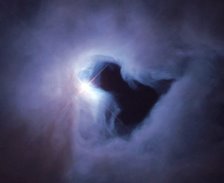

































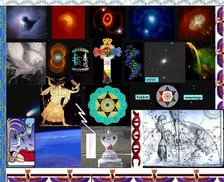
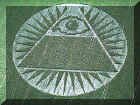




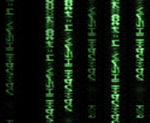


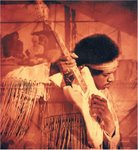




































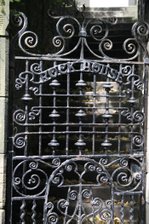



















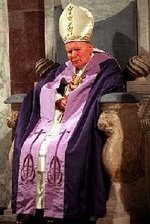








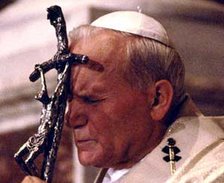



































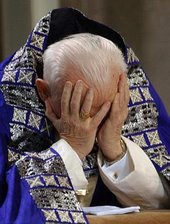

























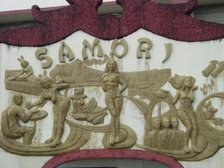





















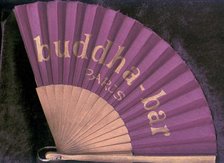
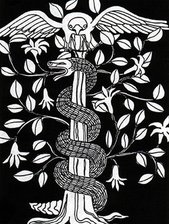








No comments:
Post a Comment